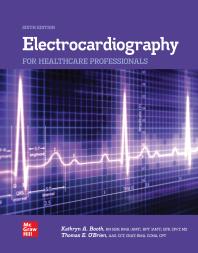 Echocardiography Board Review
by
Ramdas G. Pai; Padmini Varadarajan
Echocardiography Board Review
by
Ramdas G. Pai; Padmini Varadarajan
Call Number: eBook (online resource)
Multiple Choice Question-and-Answer Book for Echocardiographers of All Levels--3rd Edition Updated to Include 100 New Questions Echocardiography Board Review, Third Edition is written in a unique question-and-answer format. Each question contains four potential answers related to the field of echocardiography -- only one of which is correct. The discussion following each question contains specific rationale explaining the correct answer, along with additional information pertaining to the topic so that key concepts are clearly understood by the reader. The questions address many areas of echocardiography, including applied ultrasound physics, practical hydrodynamics, imaging techniques, valvular heart disease, myocardial diseases, congenital heart disease, noninvasive hemodynamics, surgical echocardiography, and more. Rather than being a replacement for a standard echocardiography textbook, Echocardiography Board Review is designed to complement the textbook by bringing out salient concepts in a clear fashion. Features of the work include: Various echocardiographic techniques, applications, and the disease processes that they address Aspects of echocardiography that are likely to appear in echocardiography certifying examinations such as the National Board of Echocardiography for Cardiologists Applied physics and discussion of various technical or hemodynamic considerations 100 new multiple-choice questions (MCQs), bringing the grand total to 600+ MCQs divided into 30 chapters Echocardiography Board Review, Third Edition is a helpful resource for those involved in the field of echocardiography who wish to become better practitioners through an active form of learning. Additionally, the work serves as a useful complementary asset in preparing for various certifying examinations related to the field of echocardiography.
 Electrocardiography for Healthcare Professionals
by
Electrocardiography for Healthcare Professionals
by
